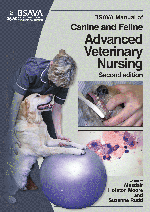
Full text loading...

Small animal veterinary nutrition initially focused on the essential nutrients and minimal requirements needed to meet the basic biological needs of animals. It was later recognized that health and vitality could be further improved by modifying nutrient levels to the lifestage, lifestyle and breed of an individual animal. In addition, the metabolic changes associated with certain disease states could be corrected or controlled by adjusting levels of key nutrients. Complete nutrition is essential for maintaining good health and plays an important role in modulating many common diseases in animals. Clinical nutrition entails understanding basic nutritional principles and the application of nutrition in optimizing health and well being. This chapter considers diets for dogs and cats with specific conditions such as Hepatic disease; Renal disease; Cardiac disease; Pancreatitis; Diabetes mellitus; Neoplasia; Obesity; Skin disease; Urolithiasis; Gastrointestinal disease; and Degenerative joint disease. The chapter also considers a nutritional assessment, nutritional plan, special conditions, enteral nutrition, parenteral nutrition and monitoring for the hospitalized patient.
Clinical nutrition, Page 1 of 1
< Previous page | Next page > /docserver/preview/fulltext/10.22233/9781905319725/9781905319725.3-1.gif

Full text loading...











